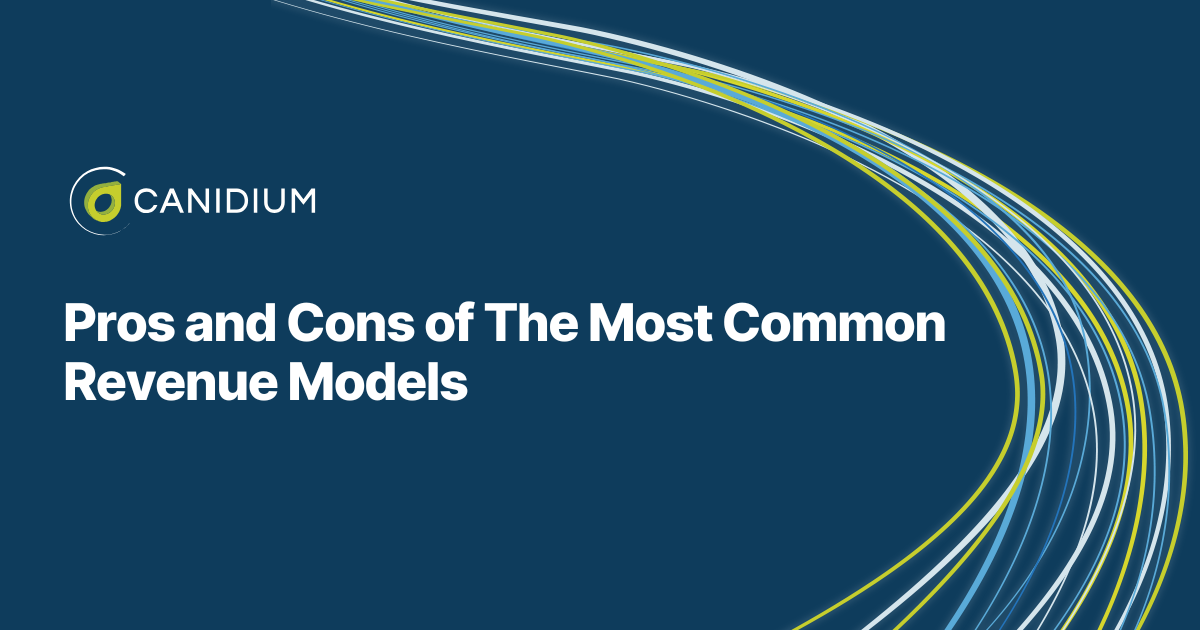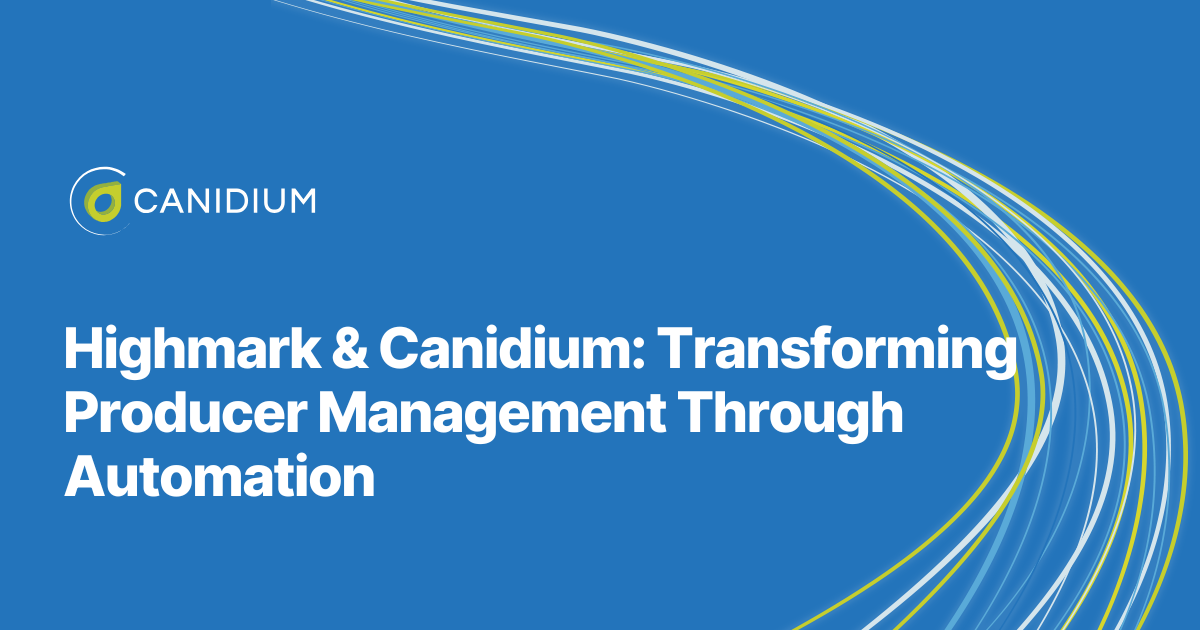Revenue Operations, also known as RevOps, is a dynamic and constantly changing aspect of many businesses' strategies to reach their target audience. It is focused on improving the entire customer engagement process from beginning to end. This includes sales operations, marketing operations, finance operations, and the technological systems and data that support these functions.
According to this article about the history of RevOps, it's a relatively new concept. Though the terminology and philosophy is relatively new, Canidium has been helping organizations create this unification among sales, marketing, finance, and customer success since 2008.
So why all the excitement about the term Revenue Operations? RevOps' integrated approach enables companies to monitor the end-to-end process in near real-time, proactively identifying and addressing any roadblocks to improve the customer experience.
What is RevOps and what Departments Does it Touch?
RevOps aims to unify and streamline various processes significantly impacting the customer journey, particularly in subscription-based models. By integrating these operations, companies can improve operational efficiency, manage leads, opportunities, transactions, and renewals more effectively, and optimize the customer lifecycle while maximizing the value of each relationship.
“RevOps looks at the total picture, not just from a strategy and KPI perspective, but also from the traditional people, process, technology, and data perspective. And this really helps us to ensure that everyone stays aligned…”
- Rosalyn Santa Elena, VP Global Revenue Operations at Neo4j
RevOps touches the entire organization, creating total integration. Here are the specific areas of an organization RevOps can impact:
Sales Operations
Sales operations focus on optimizing the sales process. This includes sales forecasting, performance analytics, territory management, and sales process design. In RevOps, sales operations ensure that the sales team has the right tools, processes, and support to effectively engage with prospects and customers.
Marketing Operations
Marketing operations involve planning, executing, and measuring marketing campaigns and initiatives. In RevOps, marketing operations work closely with sales operations to ensure alignment between marketing and sales efforts. This includes lead management, marketing analytics, and campaign optimization to generate high-quality leads for the sales team.
Finance Operations
Finance operations deal with financial planning, reporting, and analysis. In RevOps, finance operations play a role in revenue forecasting, pricing strategy, and financial analysis to support decision-making. They also work closely with sales and marketing operations to ensure that revenue targets are met and financial goals are aligned with business objectives.
Technological Systems and Data
Technological systems and data are the backbone of RevOps. This includes Customer Relationship Management (CRM) systems, marketing automation platforms, data analytics tools, and other technologies that enable the integration and consolidation of sales, marketing, and finance operations. These systems provide the data and insights to optimize the end-to-end customer engagement process and drive operational efficiencies.
In RevOps, these components create a unified approach to managing revenue operations, focusing on aligning sales, marketing, and finance functions to drive revenue growth and enhance the customer experience.
The 4 Pillars of RevOps

1. Operations
Efficiency is key in Revenue Operations (RevOps). Teams focus on standardizing processes across sales, marketing, and customer success to align efforts and enhance overall efficiency in revenue generation. By streamlining workflows and eliminating redundant tasks, RevOps ensures that resources are utilized effectively and that teams can work seamlessly together towards common revenue goals. This standardized approach increases productivity and improves communication and collaboration across departments, leading to a more cohesive and efficient revenue-generation process. Ultimately, the emphasis on efficiency in RevOps allows organizations to maximize their revenue potential and deliver exceptional customer value.
2. Enablement
Enablement is a crucial pillar in the Revenue Operations (RevOps) framework, focusing on empowering teams to excel in their roles. This involves not only maintaining comprehensive databases to support each revenue team but also developing robust learning and development (L&D) programs and incentives for continuous skill enhancement. By providing the necessary tools, resources, and training, RevOps teams work hand in hand with sales enablement to strategize sales team training programs that enable sales representatives to close deals more effectively and efficiently.
Sales enablement within the RevOps model goes beyond just training sessions; it encompasses a holistic approach to equipping sales teams with the knowledge, skills, and tools they need to succeed in a rapidly evolving market. This includes personalized coaching, access to relevant data and insights, ongoing support, and continuous feedback mechanisms to ensure sales representatives are always equipped to meet and exceed their targets. By fostering a culture of continuous learning and improvement, the collaboration between RevOps and sales enablement results in a highly productive and motivated sales force that can adapt to changing market dynamics and drive better results for the organization.
3. Insights
Data is central to RevOps, serving as the backbone that drives strategic decisions and fuels revenue growth through actionable insights. By harnessing the power of data from various sources, organizations can gain a deep understanding of their customers and market dynamics.
These valuable insights not only inform lead-generation strategies but also play a crucial role in identifying customer churn patterns. By analyzing data trends and patterns, RevOps teams can proactively address potential issues and implement targeted retention strategies to minimize customer attrition.
Data-driven decision-making facilitated by RevOps extends beyond individual departments. By sharing insights and analysis across the organization, teams can collaborate more effectively and align their efforts toward common revenue goals. This holistic approach ensures that every decision is backed by data and contributes to the overall success of the business.
Data in RevOps is not just a tool for analysis but a catalyst for innovation and growth. By leveraging data-driven insights, organizations can unlock new opportunities, optimize processes, and drive continuous improvement across all aspects of revenue operations.
4. Tools
Managing a plethora of tools can be daunting in today's digital age. With numerous software solutions and platforms available, businesses can easily become overwhelmed by the complexity of managing their tech stacks. However, Revenue Operations (RevOps) offers a solution to this challenge by streamlining tech stacks and ensuring seamless integration across all systems. By centralizing data and processes, RevOps creates a single source of truth for revenue data, eliminating data silos and discrepancies.
In addition to integrating various tools and systems, RevOps also leverages automation tools to enhance operational efficiency further. By automating repetitive tasks and workflows, teams can save time and resources, allowing them to focus on more strategic initiatives. Automation also helps reduce human error and ensures consistency in processes, improving revenue operations' productivity and accuracy.
Overall, the combination of streamlined tech stacks and automation within the RevOps framework not only simplifies tool management but also drives operational excellence and enables organizations to make data-driven decisions more effectively. By embracing RevOps principles, businesses can optimize their technology infrastructure and enhance their overall revenue generation capabilities.
Benefits of a RevOps Model
Transitioning to a revenue operations model offers numerous benefits across sales, marketing, and customer engagement. For sales teams, it means better leads and shorter cycles. Marketing teams enjoy automated customer lifecycle management and deeper insights. Customers benefit from more responsive and personalized service.
For Sales Teams
Effective sales teams rely on high-quality leads and opportunities to achieve their objectives. Revenue operations can provide such leads and opportunities by leveraging data insights to understand customers' needs and preferences. This, in turn, enables sales teams to engage in targeted outreach and build lasting relationships with prospects and customers. As a result, sales cycles are shortened, deal sizes increase, and customers feel more satisfied with the value they receive from your company. By partnering with revenue operations, sales teams can enhance performance and drive better results.
For Marketing Teams
Integrated revenue operations involve technology to automate various aspects of the customer lifecycle management process. This includes the automation of lead generation, sales, and customer support activities, among others. Revenue operations teams can gain fresh insights into customer behavior, preferences, and trends by consolidating data from different sources. This, in turn, helps them anticipate changes in customer needs and expectations throughout the go-to-market process and adjust their strategies accordingly. Ultimately, integrated revenue operations enable organizations to optimize revenue generation processes, improve customer experience, and stay ahead of the competition.
For Customers
When a company has integrated revenue operations, all aspects of the revenue generation process are aligned and working together seamlessly. This includes marketing, sales, and customer service teams. This integration results in a comprehensive view of customer needs, which allows the company to offer personalized solutions that cater to these needs quickly and efficiently. Moreover, this approach enables the company to provide an exceptional customer experience that can lead to increased customer satisfaction and loyalty. By having a holistic view of the customer journey, companies can identify areas of improvement and make data-driven decisions to enhance their revenue operations further. This approach ultimately results in better business performance and financial outcomes.
For Finance Teams
In a revenue operations model, finance teams benefit from greater visibility and control over revenue-related processes. By integrating finance operations with sales and marketing, finance teams can access real-time data on sales performance, customer behavior, and revenue trends. This enables them to make more informed pricing, billing, and financial planning decisions. Additionally, by streamlining processes and reducing manual tasks, finance teams can improve efficiency and reduce costs. A revenue operations model can help finance teams drive revenue growth, optimize financial performance, and support overall business success.
Is a RevOps Model Right for Your Organization?
Implementing revenue operations capabilities requires the right team, suitable systems, and business processes. A revenue intelligence capability is crucial, consolidating data used by various teams to understand the end-to-end sales and marketing process, identify bottlenecks, and drive sales and cash flow. Embracing revenue operations can significantly benefit companies by enhancing customer engagement, streamlining operations, and driving revenue growth.
Many organizations engage with a strategic partner to help them choose the right combination and configuration of software solutions to deploy a RevOps model effectively. The right strategic partner will also think critically about the industry climate, scaling goals, and business nuances before suggesting a RevOps solution.


.png)





